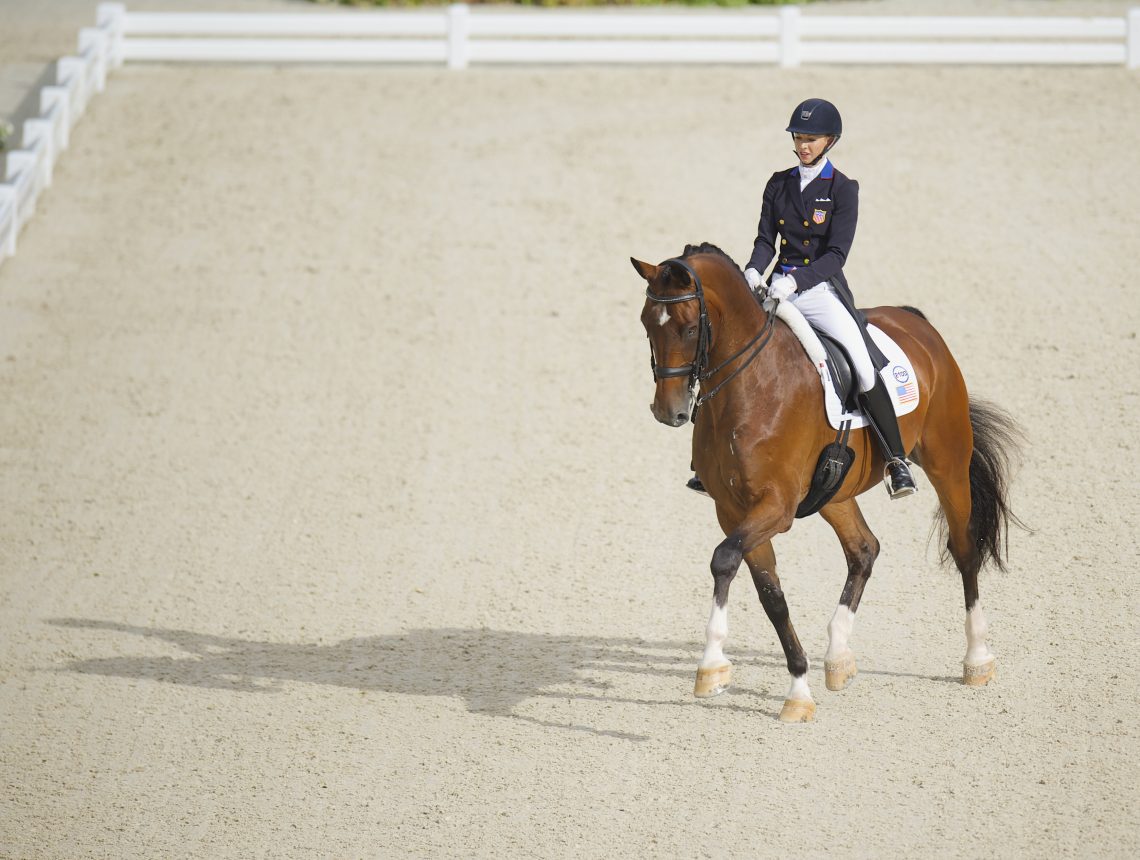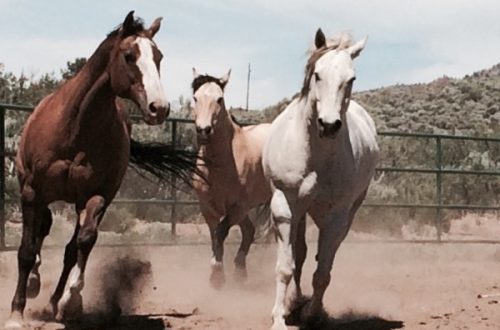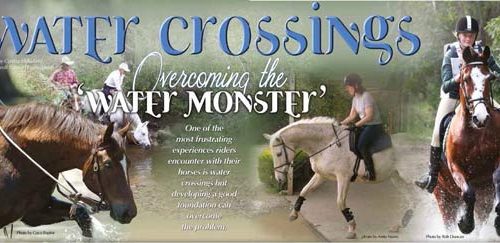
Working the rider on the walk – training balance and “feeling of the horse”
Work of the rider on the walk – training the balance and “feeling of the horse”
Even experienced riders need to periodically pay attention to their position, the basis of which is balance. In this case, the movements of a person follow the movements of a horse. What do we need to know about the biomechanics of such movements? What happens to the human body? With the body of a horse?
Our article will be devoted to the work of the rider at the walk, which, by right, is considered the most “simple” horse gait.
To begin with, consider the “walk” not as a gait, but as a complete cycle of movement carried out by the limb of the horse, regardless of the gait. It starts when the horse’s foot is on the ground and ends when the foot is almost ready to touch the ground. The step is divided into two phases: the suspension phase and the support phase. In the suspension phase, the limb is in the air, in the support phase, the limb is on the ground, and the body moves forward.
The right hind and left forelimbs are in the suspension phase, as they do not touch the ground. The left hind and right forelimbs are in the stance phase because they are in contact with the ground.
Step This is a four beat gait. As you walk, you can hear distinct four hoofbeats. This is because each hoof comes to the ground separately from the others. All four hits are equal. The step movement begins with a push with the back foot. In the future, the change of legs goes in the following sequence: the right front leg, the left rear leg rises behind it, then the left front comes off the ground and then the right back, etc.
The walk does not have a suspension phase, which is found in the trot and canter (suspension is the moment when the hooves – 2 or more – do not touch the ground). This makes the walk the easiest gait for the rider. The rider maintains posture and balance with ease.
While in the saddle, the rider feels how, following the movements of the limbs, the horse’s back alternately lowers and rises. When the horse’s left hindquarters rises, the rider’s right hip goes down in relation to the left. The walk is a symmetrical gait, like a trot, but not like a canter, as the horse performs symmetrical actions on both sides of the body. In this photo we can see that the horse’s left hindquarters is moving forward and in contact with the ground (stance phase begins), the left forehand is about to hit the ground (it is at the end of the suspension phase and before the stance phase begins). The right hindquarters has finished the stance phase and is starting the suspension phase, while the right forehand is still in the stance phase.
In this photo, the left rear begins the suspension phase, the left front completes the stance phase, the right rear begins the stance phase, and the right front begins the stance phase.
Compare the walk with the trot and the gallop.
Lynx is a two-beat gait. When trotting, you can hear a distinct two beat – two diagonal hooves hitting the ground at the same time. Left front and right rear, right front and left rear.
At the trot, there is a suspension phase every time the horse changes from one diagonal pair of legs to the other.
Trotting is much more difficult than walking. Some riders find it more difficult than cantering. The horse’s back moves up and down, and the horse’s hind legs alternately push the back forward. The rider must learn to absorb all these vibrations, otherwise the trot will be uncomfortable for both him and the horse.
The trot is a symmetrical gait, as the horse performs the same movements on both sides of the body. In the photo you can see how the horse’s right thigh goes down while the right hind leg is in the suspension phase under the horse’s body.
In the next photo, you can see the hang phase that occurs when changing diagonals. This is what pushes you up at the trot.
Gallop – three-stroke gait. You can hear the hooves hit the ground three times. This is because at a gallop, two out of four hooves hit the ground at the same time. Sequence at the canter: hind foot, second hind foot and diagonal front foot at the same time, second front foot.
At the canter, there is a suspension phase before the hind foot strikes the ground once.
The gallop happens with the left and with the right foot. It depends on which direction the horse is moving. The leg with which the horse begins to move is called the leading one. In the photo you can see the suspension phase at the canter. The horse’s hooves do not touch the ground.
In order for a horse, for example, to gallop in a circle riding to the right with the correct foot, it needs to start moving with the left hind foot. Then the right rear and left front will touch the ground at the same time, and the right front foot will complete the cycle. Then comes the hanging phase. Thus, the leading foot is the last to land on the ground.
The canter is more difficult for the rider than the walk, but is preferred by many over the trot. The gallop has no up-and-down oscillatory movement and is therefore more comfortable than the trot.
The rider needs to learn how to absorb the progressive, deeper swinging movements of the horse’s back. The problem may be that the horse is cantering at a higher speed. And if the horse is not well balanced, both he and the rider will feel insecure. If you are moving in a circle, then the centrifugal force will add to this feeling of even more instability.
The gallop is an asymmetrical gait because the horse makes different movements on both sides (depending on which leg is leading).
The horse is riding to the left. Her left rear and right front legs are in this case that diagonal pair. which will touch the ground at the same time. The horse’s weight will drop onto the leading leg and then the suspension phase will follow.
Both horses (photo below) are riding to the left. The photo captures the moment of the gallop, which precedes the moment captured in the photo above. The left hind and right front legs of these horses are just about to touch the ground.
Riding step
Walk, as we have already said, is the easiest gait for riding. It is the slowest and has no hang phase. But even on the walk you need to be sure that you are riding correctly, in balance, while maintaining the correct fit. To improve the fit on the walk, we always start from the very basics.
Trouble at the walk begins when the horse is not taught to carry itself. This means that the horse has to maintain his stride speed by himself! The rider does not have to constantly control it by shortening or slowing it down. The horse must be able to move evenly without the assistance of the rider (picture below).
If the horse does not maintain his stride on his own, the rider may develop a habit of constantly working with the reins in an attempt to reduce the rhythm, or constantly pushing the horse with the leg to keep him “sleeping”.
The ability of a horse to move and maintain a gait on its own is a very important factor on which your success and development depend!
In fact, in order to improve landing on the walk, the rider needs to learn to do less than he usually does. The rider must allow the horse to move his pelvis during the ride. This means relaxing the lower back and seat and moving with the horse. Only in this way the horse will be able to work freely with his back. However, this is easier said than done.
How is everything going?
Your pelvis should move with the horse’s back, or rather, your horse should move your pelvis, not the other way around.
You should be able to feel the movements of the horse’s back as it lowers and rises from side to side. This only happens when your pelvis and lower back are relaxed.
The sit bones are located at the bottom of the pelvis. You should allow your horse to move your pelvis rather than trying to move the horse on your own.
How shouldn’t things happen?
You don’t have to push the horse with your seat. This happens when the rider decides that the horse is not moving hard enough. Typically, in this case, the rider begins to work with the pelvis and lower back and compress the leg.
Do not pinch the loin and seat or move against the movement of the horse. This happens when the horse is in a hurry and adds a stride, and the rider tenses the muscles of the seat and lower back and pulls on the reins.
Let’s try to execute exercise!
We move the pelvis along with the horse on the walk.
Below we will describe what happens in the walk, using the example of a walk that begins when the horse’s left hind leg is brought forward:
1. When the horse moves the left hind leg forward (hanging phase), the horse’s croup on that side drops down.
2. This is because as the left leg moves forward, the horse’s belly moves from left to right (bottom left picture).
3. To remember this, imagine that when moving forward, the leg pushes the stomach to the side out of its way.
4. After the left hind leg is on the ground, the horse’s body will move forward towards that leg (stance phase), the hindquarters will rise on the same side, and the belly will rock back to the left (figure below right).
5. If you are sitting correctly and your pelvis is following the movements of the horse, you will feel one side of the pelvis drop down as the horse’s hind leg moves forward and the belly swings to the side. You should then feel this side of the pelvis lift as the horse puts the hoof on the ground and the belly comes back.
If you’ve never felt this way, it’s time to learn how to correct your walking position.
Learning to follow the pelvis to the movement of the horse at the walk:
1. Send the horse to walk, give the reins. Walk on a long rein. Relax your pelvis completely. If before that you had the problem described above, try not to squeeze the horse with your legs and just relax your legs – let them “hang”.
2. While you are trying to do things that are completely opposite to what you are used to, focus on preventing your body from working again in the old pattern. Relax your lower body completely, only then will you be able to follow the movements of the horse.
3. If your horse slows down or stops, it means that he is not trained to move forward without your constant messages and reminders.
4. If you are used to constantly pushing the horse forward, at first it will be difficult for you to trust him. Work on getting the horse to carry itself. The effect of this will exceed all your expectations.
5. After you remember the correct sensations, you can try to strain certain areas of the body, trying to change the rhythm of the step. But don’t forget, your goal is to learn to feel how and why your horse’s back moves.
Some riders, after trying the correct walk riding, are surprised at how much the horse’s movements change.
Thus, sensitive horses begin to relax as they feel that the rider is moving with them, not against them.
Many riders who ride hurried horses try to tighten their pelvis and tighten the reins in an attempt to slow down their gait. This increases the tension of the horse: his movements become even more impetuous.
Such riders need to relax their back, lower back and seat, allowing the horse to move their pelvis. A hurried horse needs to learn how to maintain its gait on its own, but in the case of a walk, a lot more patience and calmness will be required from the rider.
Many riders are very surprised at how their horses start to work when they have the opportunity to relax their back.
A great way to reinforce this lesson (you will need a helper) is to do the following exercise:
Every time you feel that the horse’s hind leg is off the ground and its croup is down on that side, tell your helper: “right” or “left”. The helper should check if you feel the horse’s movements correctly and tell you about it.
Allow your hips, buttocks and lower back to completely relax as you walk. Feel the movements of the horse’s back. Try to feel how the horse’s legs leave the ground and step forward.
The assistant will tell you if your feelings are correct. You can describe what you are experiencing, and he will tell you if it matches the real state of affairs. This process will teach you to feel the horse and follow him.
Jane Myers (source); translation by Valeria Smirnova





